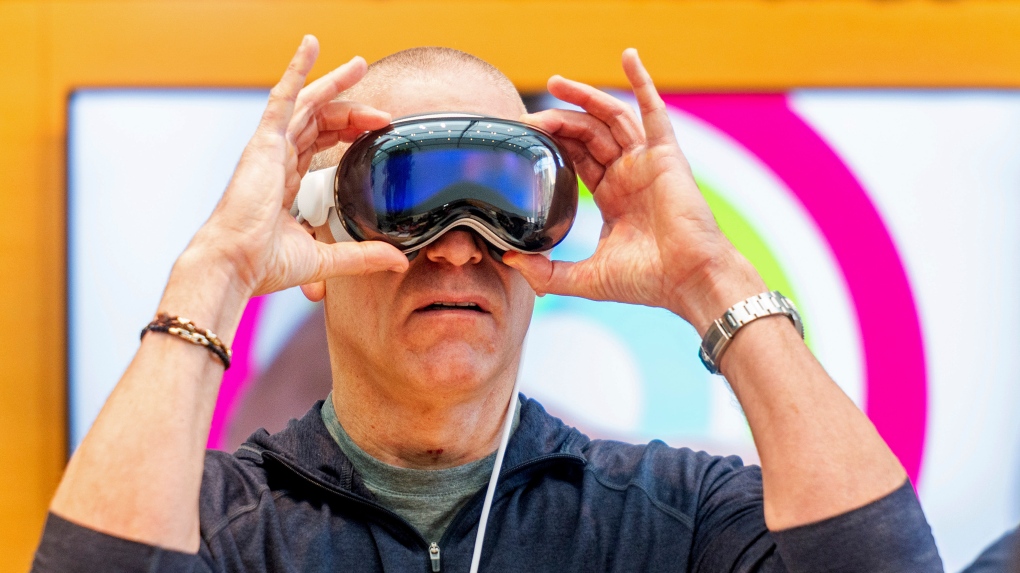
Why Apple is pushing the term 'spatial computing' along with its new Vision Pro headset
CTV
With Apple's hotly anticipated Vision Pro headset hitting store shelves Friday, you're probably going to start to see more people wearing the futuristic googles that are supposed to usher in the age of 'spatial computing.'
With Apple's hotly anticipated Vision Pro headset hitting store shelves Friday, you're probably going to start to see more people wearing the futuristic googles that are supposed to usher in the age of "spatial computing."
It's an esoteric mode of technology that Apple executives and their marketing gurus are trying to thrust into the mainstream. This while avoiding other more widely used terms such as "augmented reality" and "virtual reality" to describe the transformative powers of a product that's being touted as potentially monumental as the iPhone that came out in 2007.
"We can't wait for people to experience the magic," Apple CEO Tim Cook gushed Thursday while discussing the Vision Pro with analysts.
The Vision Pro also will be among Apple's most expensive products at US$3,500 -- a price point that has most analysts predicting the company may only sell 1 million or fewer devices during its first year. But Apple only sold about 4 million iPhones during that device's first year on the market and now sells more than 200 million of them annually, so there is a history of what initially appears to be a niche product turning into something that becomes enmeshed in how people live and work.
If that happens with the Vision Pro, references to spatial computing could become as ingrained in modern-day vernacular as mobile and personal computing -- two previous technological revolutions that Apple played an integral role in creating.
So what is spatial computing? It's a way to describe the intersection between the physical world around us and a virtual world fabricated by technology, while enabling humans and machines to harmoniously manipulate objects and spaces. Accomplishing these tasks often incorporates elements of augmented reality, or AR, and artificial intelligence, or AI -- two subsets of technology that are helping to make spatial computing happen, said Cathy Hackl, a long-time industry consultant who is now running a startup working on apps for the Vision Pro.
"This is a pivotal moment," Hackl said. "Spatial computing will enable devices to understand the world in ways they never have been able to do before. It is going to change human to computer interaction, and eventually every interface -- whether it's a car or a watch -- will become spatial computing devices."

 Run 3 Space | Play Space Running Game
Run 3 Space | Play Space Running Game Traffic Jam 3D | Online Racing Game
Traffic Jam 3D | Online Racing Game Duck Hunt | Play Old Classic Game
Duck Hunt | Play Old Classic Game